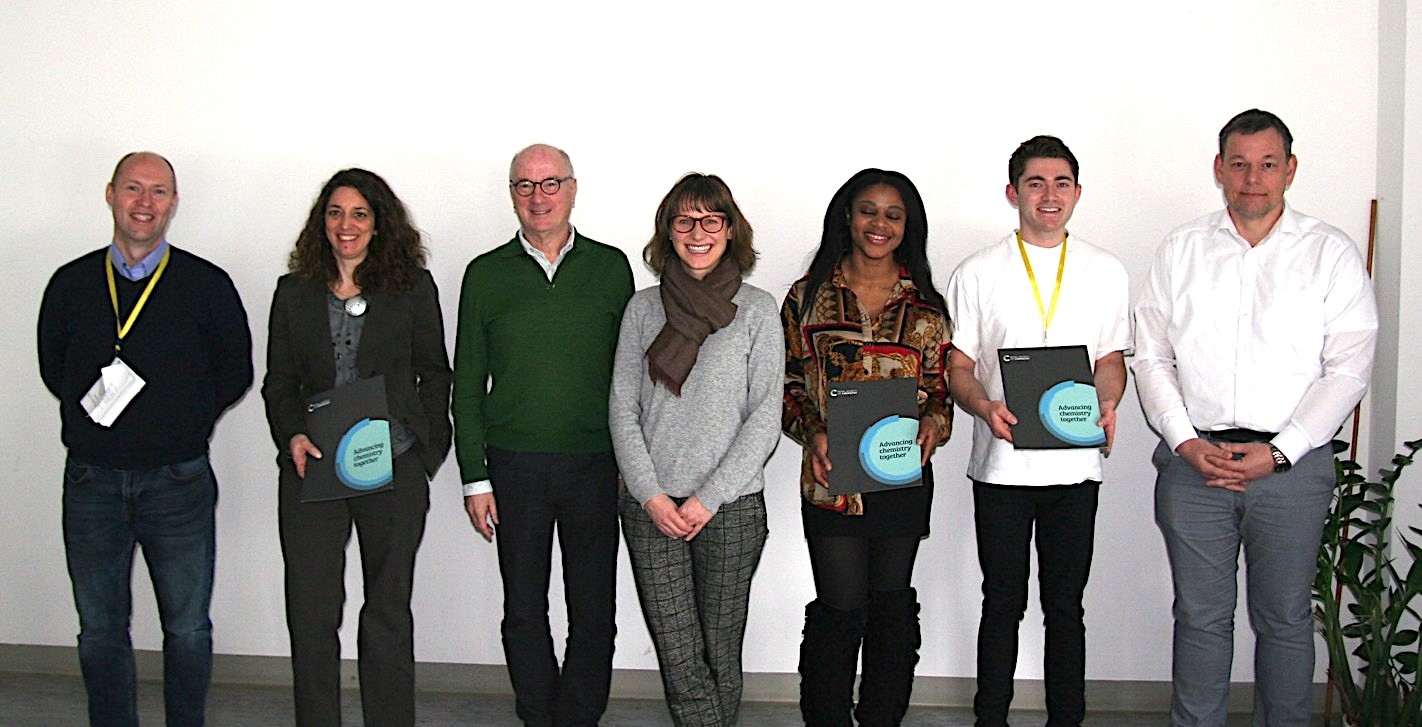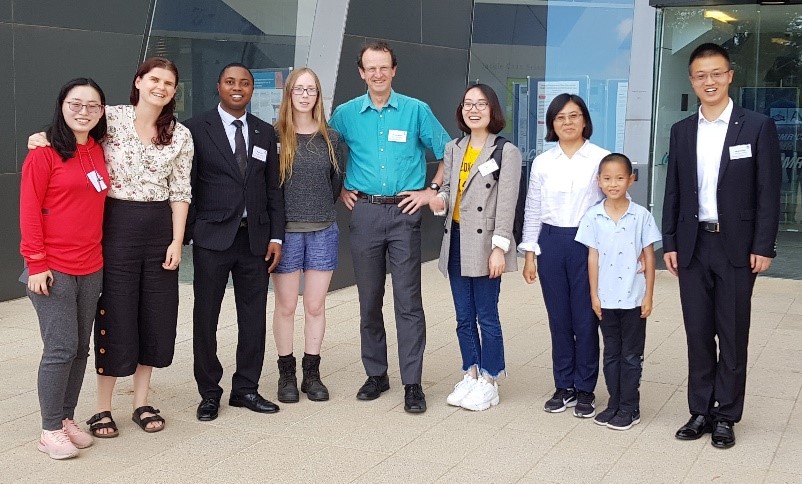Every month we update our Recent Reviews collection. This rolling collection showcases all of the review articles published in RSC Advances in the last 6 months. Don’t forget to come back next month to check out our latest reviews.
We hope you enjoy reading and as always, all of our articles are open access so you can easily share your favourites online and with your colleagues.
Check out the full collection!
Browse our April reviews below:
Super tough poly(lactic acid) blends: a comprehensive review
Xipo Zhao, Huan Hu, Xin Wang, Xiaolei Yu, Weiyi Zhou and Shaoxian Peng
RSC Adv., 2020, 10, 13316-13368
DOI: 10.1039/D0RA01801E, Review
Enzyme encapsulation by protein cages
Soumyananda Chakraborti, Ting-Yu Lin, Sebastian Glatt and Jonathan G. Heddle
RSC Adv., 2020, 10, 13293-13301
DOI: 10.1039/C9RA10983H, Review
An overview of the chemical constituents from the genus Delphinium reported in the last four decades
Tianpeng Yin, Le Cai and Zhongtao Ding
RSC Adv., 2020, 10, 13669-13686
DOI: 10.1039/D0RA00813C, Review
Advances in intrinsic self-healing polyurethanes and related composites
Bertrand Willocq, Jérémy Odent, Philippe Dubois and Jean-Marie Raquez
RSC Adv., 2020, 10, 13766-13782
DOI: 10.1039/D0RA01394C, Review
Benefits and applications of microwave-assisted synthesis of nitrogen containing heterocycles in medicinal chemistry
Maged Henary, Carl Kananda, Laura Rotolo, Brian Savino, Eric A. Owens and Giancarlo Cravotto
RSC Adv., 2020, 10, 14170-14197
DOI: 10.1039/D0RA01378A, Review
Microneedles: a potential strategy in transdermal delivery and application in the management of psoriasis
Zihan Zhao, Youdong Chen and Yuling Shi
RSC Adv., 2020, 10, 14040-14049
DOI: 10.1039/D0RA00735H, Review
Progress in the functional modification of graphene/graphene oxide: a review
Wang Yu, Li Sisi, Yang Haiyan and Luo Jie
RSC Adv., 2020, 10, 15328-15345
DOI: 10.1039/D0RA01068E, Review
Carbon and graphene quantum dots: a review on syntheses, characterization, biological and sensing applications for neurotransmitter determination
Somayeh Tajik, Zahra Dourandish, Kaiqiang Zhang, Hadi Beitollahi, Quyet Van Le, Ho Won Jang and Mohammadreza Shokouhimehr
RSC Adv., 2020, 10, 15406-15429
DOI: 10.1039/D0RA00799D, Review
Advances in the chemical and biological diversity of heterocyclic systems incorporating pyrimido[1,6-a]pyrimidine and pyrimido[1,6-c]pyrimidine scaffolds
Khaled M. Elattar, Başak Doğru Mert, M. Monier and Ahmed El-Mekabaty
RSC Adv., 2020, 10, 15461-15492
DOI: 10.1039/D0RA00411A, Review
Applications of nano-materials in diverse dentistry regimes
Loke Kok Foong, Mohammad Mehdi Foroughi, Armita Forutan Mirhosseini, Mohadeseh Safaei, Shohreh Jahani, Maryam Mostafavi, Nasser Ebrahimpoor, Maryam Sharifi, Rajender S. Varma and Mehrdad Khatami
RSC Adv., 2020, 10, 15430-15460
DOI: 10.1039/D0RA00762E, Review
Enabling protein-hosted organocatalytic transformations
Alexander R. Nödling, Nicolò Santi, Thomas L. Williams, Yu-Hsuan Tsai and Louis Y. P. Luk
RSC Adv., 2020, 10, 16147-16161
DOI: 10.1039/D0RA01526A, Review
Properties of multifunctional composite materials based on nanomaterials: a review
Alamry Ali and Andri Andriyana
RSC Adv., 2020, 10, 16390-16403
DOI: 10.1039/C9RA10594H, Review
Fundamentals and recent progress relating to the fabrication, functionalization and characterization of mesostructured materials using diverse synthetic methodologies
Soroush Soltani, Nasrin Khanian, Umer Rashid and Thomas Shean Yaw Choong
RSC Adv., 2020, 10, 16431-16456
DOI: 10.1039/D0RA00440E, Review
Structural features, interaction with the gut microbiota and anti-tumor activity of oligosaccharides
Yulin Wu, Yinning Chen, Yingfang Lu, Huili Hao, Jun Liu and Riming Huang
RSC Adv., 2020, 10, 16339-16348
DOI: 10.1039/D0RA00344A, Review
Solutions to the water flooding problem for unitized regenerative fuel cells: status and perspectives
Immanuel Vincent, Eun-Chong Lee and Hyung-Man Kim
RSC Adv., 2020, 10, 16844-16860
DOI: 10.1039/D0RA00434K, Review
N-Fluorobenzenesulfonimide: a useful and versatile reagent for the direct fluorination and amination of (hetero)aromatic C–H bonds
Qiang Gu and Esmail Vessally
RSC Adv., 2020, 10, 16756-16768
DOI: 10.1039/D0RA00324G, Review
Molecularly imprinted polymer-based bioelectrical interfaces with intrinsic molecular charges
Toshiya Sakata, Shoichi Nishitani and Taira Kajis
RSC Adv., 2020, 10, 16999-17013
DOI: 10.1039/D0RA02793F, Review
 Submit to RSC Advances today! Check out our author guidelines for information on our article types or find out more about the advantages of publishing in a Royal Society of Chemistry journal.
Submit to RSC Advances today! Check out our author guidelines for information on our article types or find out more about the advantages of publishing in a Royal Society of Chemistry journal.
Keep up to date with our latest HOT articles, Reviews, Collections & more by following us on Twitter. You can also keep informed by signing up to our E-Alerts.


















 Employed for close to 34 years at the University of Campinas (UNICAMP) in São Paulo, Brazil, Professor Meireles completed her PhD in Chemical Engineering at Iowa State University. Starting as an Assistant Professor in the School of Food Engineering in 1983, she has since become a Professor and has supervised 50 PhD dissertations, 30 MSc theses and approximately 72 undergraduate research projects. She has also coordinated scientific exchange projects between UNICAMP and European universities in France, Germany, Holland, and Spain. Angela has served as a Head of Department, as Associate Dean for Undergraduate Studies of Food Engineering and as Associated Director at the Chemical, Biological, and Agricultural Pluridisciplinary Research Center.
Employed for close to 34 years at the University of Campinas (UNICAMP) in São Paulo, Brazil, Professor Meireles completed her PhD in Chemical Engineering at Iowa State University. Starting as an Assistant Professor in the School of Food Engineering in 1983, she has since become a Professor and has supervised 50 PhD dissertations, 30 MSc theses and approximately 72 undergraduate research projects. She has also coordinated scientific exchange projects between UNICAMP and European universities in France, Germany, Holland, and Spain. Angela has served as a Head of Department, as Associate Dean for Undergraduate Studies of Food Engineering and as Associated Director at the Chemical, Biological, and Agricultural Pluridisciplinary Research Center.
